|
HOME: www.hiltonpond.org |
|||
|
SEPTEMBER SERENDIPITY We really like September. Most years the month is cooler than the invariably insufferable August just ended, and much of nature is hard at work work getting ready for a winter that inevitably will come. Many adult insects--which seldom survive cold weather--have reached full size and sexual maturity and are busy finding mates to help their genes to go forward in the form of eggs. Plants from trees to vines and ferns are setting seeds with the same goal, while most birds finished breeding long ago and--in the case of migrants--are putting on fat that allows escape to warmer climes. It's great fun (and very informative) to wander the trails at Hilton Pond Center this time of year, never knowing what we might find 'round the next bend. As our schedule allows, several times a day we head out with camera in hand, eager to find new creatures or get reacquainted with a familiar phenomenon we've seen in autumns past. We hope you'll enjoy a few nature-related things that popped up for us this week as part of what we call "September Serendipity."
All text & photos © Hilton Pond Center Here at the Center we try to run mist nets as often as possible to capture resident and migratory birds. These devices are like giant hair nets strung between two poles and in autumn they often catch far more dead leaves than birds. On windy days in particular we must stop at each net, sometimes taking several frustrating minutes to pluck fallen foliage from the mesh. While doing so this week we started to grab what we thought was a brownish dried leaf and got surprised when it suddenly flew away. We followed the flying creature to nearby vegetation and determined it was a Tawny Emperor, Asterocampa clyton (above). This camouflaged butterfly and its congener Hackberry Emperor, A. celtise, have been sighted before at the Center, likely because we have quite a few Common Hackberries, Celtis occidentalis, and some even some closely related Sugarberries, C. laevigata. Larvae of these two emperor butterflies are partial to leaves of various hackberry trees, while adults--whose upper wing surfaces are deep orange and back--feed on REALLY delicious stuff such as plant sap, rotting fruit, animal droppings, and carrion.
All text & photos © Hilton Pond Center Several of our cherished Swamp Milkweed colonies that sprouted voluntarily over time on the banks of Hilton Pond did not fare well during this year's dry, hot August. Even though pinkish flowers withered on their stalks without getting pollinated and forming seedpods, milkweed foliage seemed to weather the drought fairly well. Such leaves provide forage for several immature insects, including the caterpillars of Monarch butterflies and larva of Swamp Milkweed Beetles, Labidomera clivicollis (above). This bright-orange beetle larva is "aposematic," i.e., its showy colors warn potential predators it doesn't taste very good--thanks to glycosides and other toxins it accumulates from eating milkweed sap. It's interesting a few insects are actually able to thrive on these noxious chemicals that sicken other animals. The beetle grub in the photo must have been eating plenty of milkweed leaves, as indicated by a rather large brown dropping about to leave its distended anus. Naturalists and crossword puzzle enthusiasts refer to insect droppings as "frass," from a German word for "devour."
All text & photos © Hilton Pond Center Boom! Even without looking at the calendar we always know when dove hunting season has started in South Carolina: We're awakened at the crack of dawn by the sound of shotguns being fired in fields that surround Hilton Pond Center. Such was the case on 6 September--the first full dove hunting day of autumn (although afternoon shooting was allowed on the third through the fifth of the month). Some years we also know dove season is underway because we get an e-mail message from the federal Bird Banding Laboratory (BBL) that a Mourning Dove banded at the Center has just been reported by a hunter. Such was the case this week when we took a break from trail-walking and learned an adult male MODO we processed on 2 July 2011 had been taken by Kristopher Lilly on 3 September less than ten miles to the north, near Clover SC. Kristopher alerted us about the bird via the BBL's on-line form that has greatly facilitated the reporting of banded birds legally shot, recaptured by other banders, or found dead by homeowners after window strikes or other mishaps. Of 463 Mourning Doves (adult male above) banded at Hilton Pond since 1982, eight have been reported to the BBL by hunters, and all have been shot within York County. Although seemingly low at 1.7% this is still the best "foreign encounter" rate for any of the 125 species of birds we've banded locally. (By comparison, just 15 of our 8,656 banded House Finches have been encountered out-of-state for an average of 0.17%.)
All text & photos © Hilton Pond Center Another sign of autumn and mid-September is the appearance of scarlet berries (above) on our Flowering Dogwood trees at Hilton Pond Center. Each berry is more accurately called a "drupe," the botanical term for a fleshy fruit that contains a seed within a single hard stone.
All text & photos © Hilton Pond Center We have a smattering of Pecan trees around Hilton Pond, a couple of which are nothing short of massive. One is so old and tall its first limbs are 30 feet up, and when parts of those limbs die and break off they play havoc on the tin roof of our outbuilding. This tree's limbs are so high they also create their own microhabitat, complete with insects and epiphytes we don't ever see at ground level. This week one of those dead limbs came crashing down, bringing with it a colony of moss (above) we didn't recognize. (Please let us know at INFO if you have an ID.) Mosses are interesting and important organisms that have no flowers like the dogwood; they reproduce by spores rather than seeds. They ARE green plants--but unlike Pecan trees they sometimes grow on--mosses also lack vascular tissues (xylem and phloem) that allow a green plant to transport water, minerals, and food throughout itself. As a result, mosses seldom get very big; each individual in the photo above is only a quarter-inch tall, although one New Zealand species reportedly reaches the moss-dizzying height of 18"! Lack of vascular tissue means mosses require damp habitats where water frequently inundates their tiny leaves. In the absence of moisture mosses become desiccated and appear dead but are rejuvenated quickly by a sudden downpour. The moss colony in the photo above was like that when it fell to earth still attached to the Pecan limb. Shriveled and almost brown, it literally sprang back to life when we submerged it in a bucket of water.
All text & photos © Hilton Pond Center On a different dead Pecan branch we found another "primitive" plant--this time an unidentified gilled mushroom (above) that had sprouted through a crack in the bark. Unlike mosses--which are true plants that use sunlight to produce food--mushrooms and other fungi lack chlorophyll or vascular tissue and are even in a separate kingdom from green plants. Unable to make their own food, fungi must rely on other sources for nutrition; since the one above is on a fallen Pecan limb it is a saprophyte--an organism that makes use of dead organic matter. Chemicals produced by the fungus are able to break down cellulose in the tree and convert it into nutritive compounds. All this decomposition work is done invisibly by fungal mycelia--colorless root like growths deep within the dead limb; the emergent mushroom, with its spore-bearing gills, is the reproductive structure. We should point out that some fungi are parasitic and attack live trees, occasionally bringing about the host's demise. Usually, such activity goes unnoticed until the presence of the deadly mycelia are revealed as the telltale mushroom suddenly appears; by then it is too late, and the tree is already dying--something we're loathe to see at Hilton Pond Center. In addition to playing the important role of decomposer, the mushroom in the photo above gives evidence it, in turn, serves as food for other creatures. Note the hungry ant on its stalk and, on the left side of the cap, several nibble marks undoubtedly made by a chipmunk or squirrel.
All text & photos © Hilton Pond Center And speaking of gnawing rodents, along the trail we found a twig an Eastern Gray Squirrel apparently had bitten through and dropped to the ground--but not before tasting one of the attached acorns. The twig and nuts were from a giant Southern Red Oak, Quercus falcata, that stands just outside our office window in the old farmhouse at Hilton Pond Center. Most autumns this hundred-year-old tree still makes what must be millions of acorns, most of which get eaten sooner or later by insects, birds, small mammals, or other nucivores. ("Nucivore"--another good word for puzzle people. It means "nut-eater.") In the photo above, the acorn at left is still maturing while the one in the middle is half-eaten by a squirrel. The shriveled top acorn appears to be dead, possibly aborted by a weevil grub. Although acorns from members of the white oak group are often larger and sweeter, they have a short shelf life and tend to decompose more quickly if they don't germinate. By comparison, smaller Red Oak acorns like the one illustrated have more tannin and last longer, making them the preferred fare for winter storage by squirrels and chipmunks. Note the whitish woolly layer between nutmeat and shell in the half-eaten acorn above; white oak acorns lack this characteristic.
All text & photos © Hilton Pond Center Just as our first serendipitous encounter this week was a butterfly, so was our last--this time a female Fiery Skipper, Hylephila phyleus (above), that was uncharacteristically motionless while perched on an unopened bud of Schweinitz's Sunflower. Skippers are perhaps the most hyperactive members of the butterfly world, constantly flitting and darting--"skipping," as they say--from one flower or habitat to the next. They're difficult to catch and even harder to photograph, so we're pleased this particular individual slowed down as dusk fell over one of our small meadows at Hilton Pond Center. According to Jeffrey Glassberg's Butterflies through Binoculars, this species gets its common name because it "has the 'measles'--many small black spots on the hind wing below--giving it a fever and making it 'fiery'." As a point of reference, the sunflower bud in the photo is only about a half-inch in diameter, which gives a feel for just how small this skipper actually is. So there you have it, a small sampling of organisms we encountered this week as we ambled our trails at Hilton Pond Center. We didn't know what we would find until we went out for a look, and--as always--we were not disappointed with the results. Butterflies, berries, and beetle grubs . . . mosses, nuts, and fungi . . . and even a report of a banded bird. All these were part of "September Serendipity" at Hilton Pond Center. All text & photos © Hilton Pond Center |
 The Piedmont Naturalist, Volume 1 (1986)--long out-of-print--has been re-published by author Bill Hilton Jr. as an e-Book downloadable to read on your iPad, iPhone, Nook, Kindle, or desktop computer. Click on the image at left for information about ordering. All proceeds benefit education, research, and conservation work of Hilton Pond Center for Piedmont Natural History. The Piedmont Naturalist, Volume 1 (1986)--long out-of-print--has been re-published by author Bill Hilton Jr. as an e-Book downloadable to read on your iPad, iPhone, Nook, Kindle, or desktop computer. Click on the image at left for information about ordering. All proceeds benefit education, research, and conservation work of Hilton Pond Center for Piedmont Natural History. |
|
|
"This Week at Hilton Pond" is written and photographed by Bill Hilton Jr., executive director of Hilton Pond Center for Piedmont Natural History
|
|
|
If you Twitter, please refer
"This Week at Hilton Pond" to followers by clicking on this button: Tweet Follow us on Twitter: @hiltonpond |
Comments or questions about this week's installment? Send an E-mail to INFO. (Be sure to scroll down for a tally of birds banded/recaptured during the period, plus other nature notes.) |

Click on image at right for live Web cam of Hilton Pond,
plus daily weather summary
Transmission of weather data from Hilton Pond Center via WeatherSnoop for Mac.
|
--SEARCH OUR SITE-- For a free on-line subscription to "This Week at Hilton Pond," send us an |
|
Thanks to the following fine folks for recent gifts in support of Hilton Pond Center for Piedmont Natural History and/or Operation RubyThroat: The Hummingbird Project. Your tax-deductible contributions allow us to continue writing, photographing, and sharing "This Week at Hilton Pond." Please see Support if you'd like to make a gift of your own.
|
|
Make credit card donations
on-line via Network for Good: |
|
|
Use your PayPal account
to make direct donations: |
|
|
If you like shopping on-line please become a member of iGive, through which 800+ on-line stores from Amazon to Lands' End and even iTunes donate a percentage of your purchase price to support Hilton Pond Center .
 Every new member who registers with iGive and makes a purchase earns an ADDITIONAL $5 for the Center. You can even do Web searches through iGive and earn a penny per search--sometimes TWO--for the cause! Please enroll by going to the iGive Web site. It's a painless, important way for YOU to support our on-going work in conservation, education, and research. Add the iGive Toolbar to your browser and register Operation RubyThroat as your preferred charity to make it even easier to help Hilton Pond Center when you shop. Every new member who registers with iGive and makes a purchase earns an ADDITIONAL $5 for the Center. You can even do Web searches through iGive and earn a penny per search--sometimes TWO--for the cause! Please enroll by going to the iGive Web site. It's a painless, important way for YOU to support our on-going work in conservation, education, and research. Add the iGive Toolbar to your browser and register Operation RubyThroat as your preferred charity to make it even easier to help Hilton Pond Center when you shop. |
|
|
SPECIES BANDED THIS WEEK: * = New species for 2011 WEEKLY BANDING TOTAL 13 species 53 individuals 2011 BANDING TOTAL 33 species 1,906 individuals 181 Ruby-throated Hummingbirds 30-YEAR BANDING GRAND TOTAL (since 28 June 1982, during which time 170 species have been observed on or over the property) 125 species (30-yr avg = 67.2) 56,783 individuals (30-yr avg = 1,893) 4,469 Ruby-throated Hummingbirds (28-yr avg = 160) NOTABLE RECAPTURES THIS WEEK NONE THIS WEEK |
OTHER NATURE NOTES:
All text & photos © Hilton Pond Center --As noted on the list at left, we got our first fall parulids of the year as an Ovenbird and a Chestnut-sided Warbler (above) hit the nets. The immature male Scarlet Tanager was also a probably migrant; the species' breeding range is a tad bit north af York County where the Center sits. --Only a few spots remain for our first-ever November expedition to the eastern region of Costa Rica, where Ruby-throated Hummingbirds were not previously reported to overwinter in significant numbers. Details at Ruby-throats & Chayote: Something New With Hummingbirds In Costa Rica. All text & photos © Hilton Pond Center |


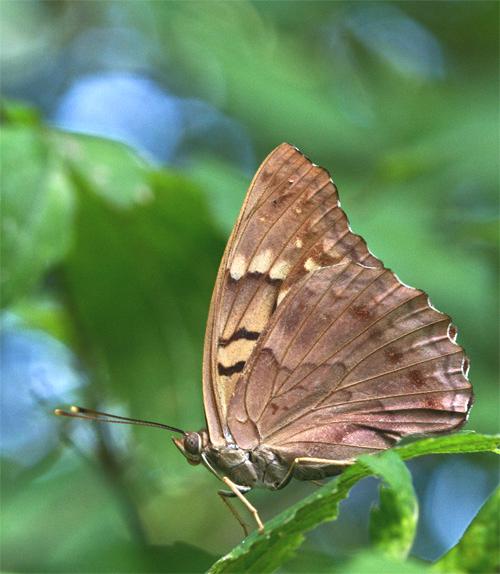
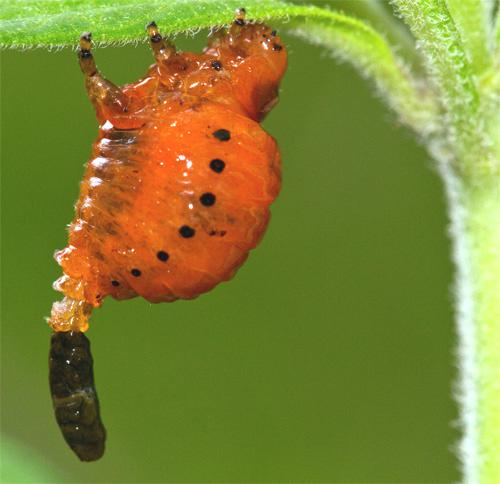


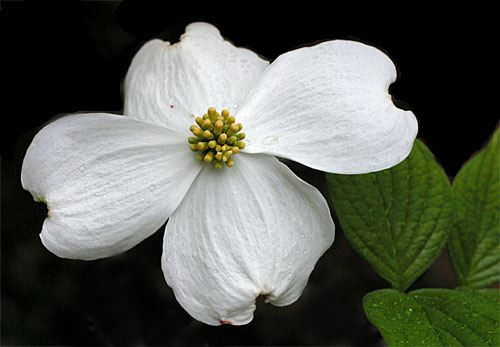 Peaches and olives are also drupes--although the former are members of the Rose Family (Rosaceae) and olives are in Oleaceae; dogwoods have their own unrelated family, the Cornaceae. It's worth remembering what most folks think of as a dogwood blossom isn't really; those big, white showy structures that appear to be petals are actually bracts (above right)--modified leaves that attract a pollinator's attention to a cluster of much smaller yellow flowers that often go ignored by human observers. In the photo above of the dogwood fruit one can see two ripe berries and one that did not mature, as well as several scars where other drupes have already fallen off. Each of these drupes or scars represents just one of the tiny yellow dogwood flowers. Another thing of interest in this photo is the presence of a swollen, pale green dogwood bud. This structure will burst forth next spring, revealing a spectacular dogwood "blossom" that will give rise to NEXT autumn's new crop of colorful dogwood drupes.
Peaches and olives are also drupes--although the former are members of the Rose Family (Rosaceae) and olives are in Oleaceae; dogwoods have their own unrelated family, the Cornaceae. It's worth remembering what most folks think of as a dogwood blossom isn't really; those big, white showy structures that appear to be petals are actually bracts (above right)--modified leaves that attract a pollinator's attention to a cluster of much smaller yellow flowers that often go ignored by human observers. In the photo above of the dogwood fruit one can see two ripe berries and one that did not mature, as well as several scars where other drupes have already fallen off. Each of these drupes or scars represents just one of the tiny yellow dogwood flowers. Another thing of interest in this photo is the presence of a swollen, pale green dogwood bud. This structure will burst forth next spring, revealing a spectacular dogwood "blossom" that will give rise to NEXT autumn's new crop of colorful dogwood drupes.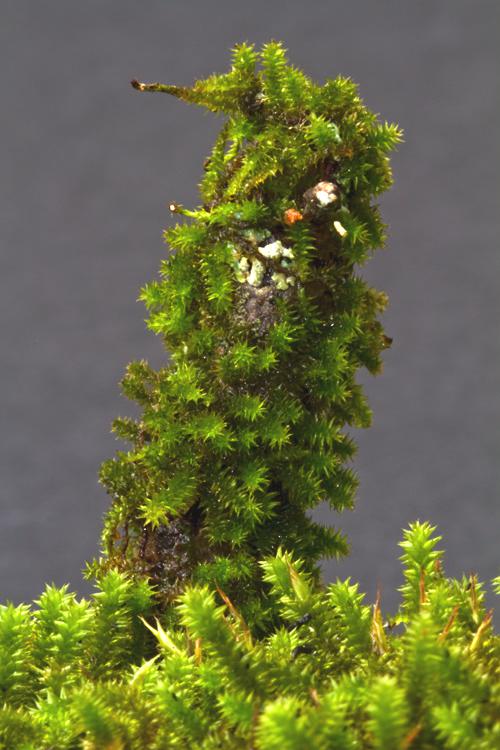
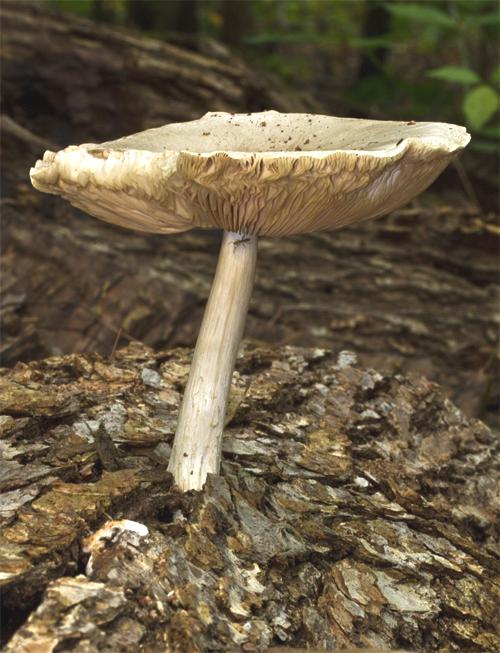
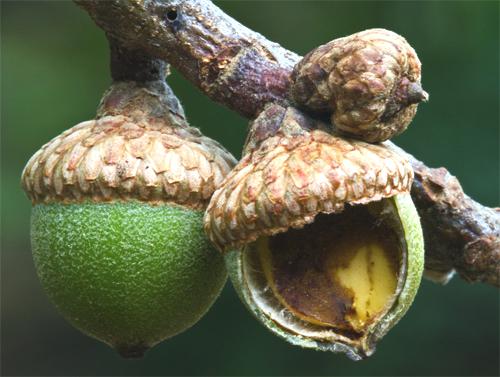
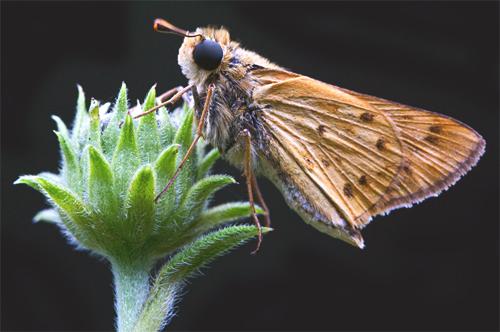

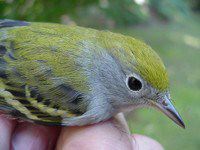
 Please report your
Please report your